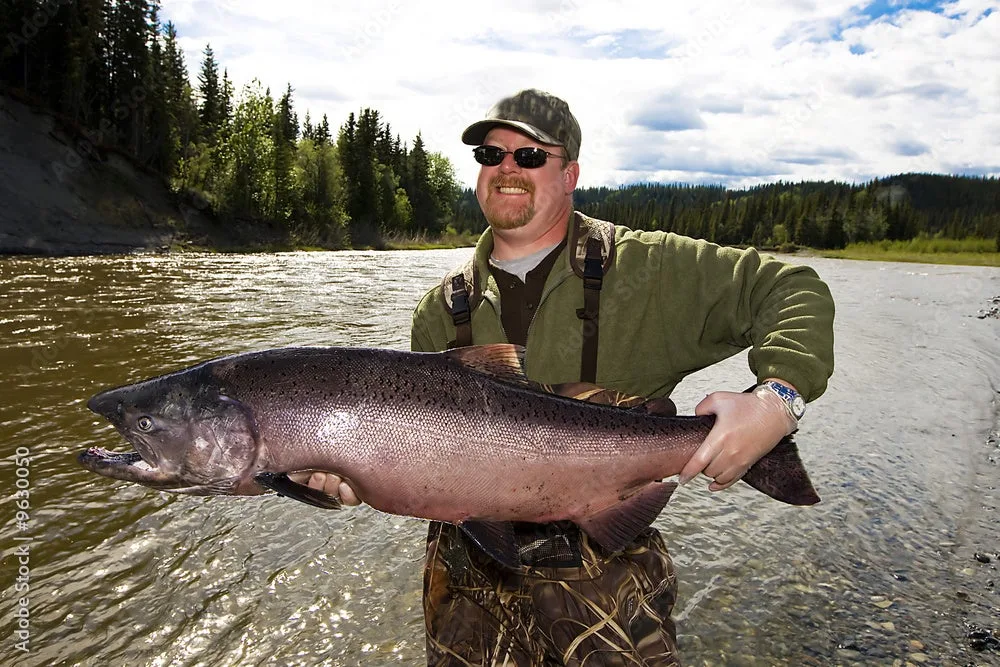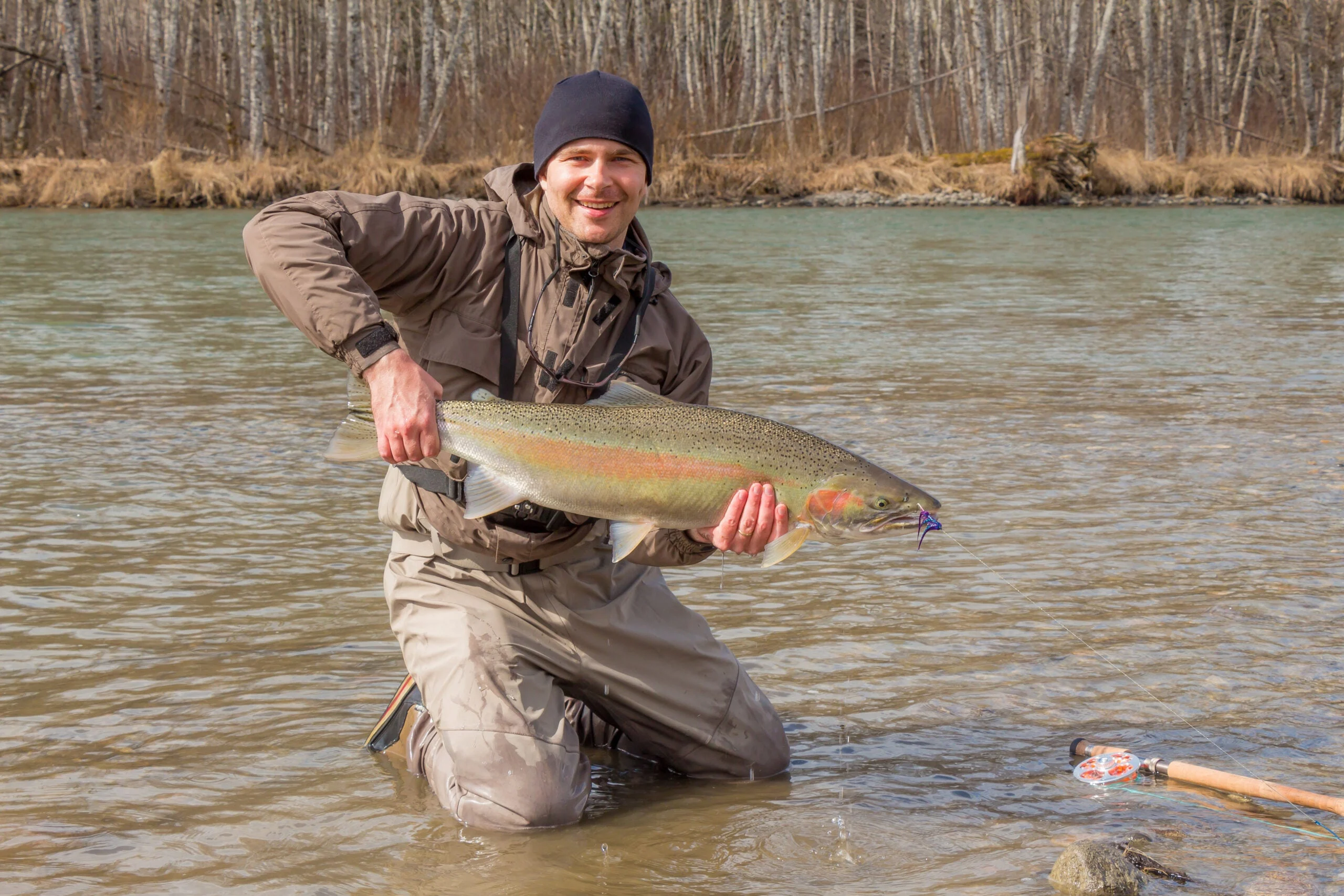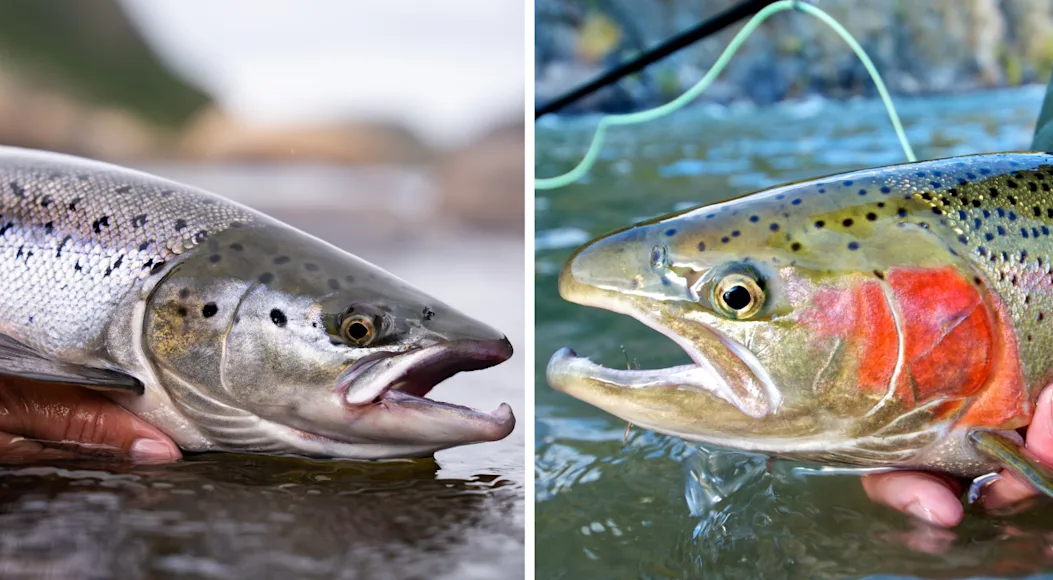Salmon and steelhead are two of the most prized gamefish in the U.S., and they’re often lumped together within angling circles and discussions. This happens because these fish are forever locked in a bit of a turf war, if you will. Throughout the country, they co-exist, and within much of their ranges, where you find one, you’ll find the other. But despite salmon and steelhead sharing bodies of water, they are wildly different in terms of habits and behavior, requiring significantly difference fishing approaches. It’s not uncommon for anglers to be diehards for one species or the other, so, if you’re on the fence about which one you’d rather get after, this breakdown of salmon vs steelhead will help you pick a camp.
Wild Fish vs Hatchery Fish
You can’t discuss salmon vs steelhead without understanding the basics of their availability. Historically, these fish were native to the West Coast, Pacific Northwest, and Alaska, and to this day no other region offers more salmon variety. Prized king, silver, and sockeye salmon still have thousands of anglers clamoring to fish Alaska and British Columbia each year, but even if the primary targets elude you, pink salmon and chum salmon will bend your rod in these locations.
Wild salmon spend most of their time in the Pacific Ocean, returning to coastal rivers to spawn from late spring through early fall. Wild steelhead
, which are essentially large rainbow trout, do the same. They’re born in coastal rivers and eventually return to the ocean where abundant forage helps them grow much bigger than inland trout and ramps up their strength and tenacity. Many anglers—regardless of which salmon vs steelhead camp they fit into—feel that the only salmon and steelhead worthy of targeting are truly wild fish that spend time in saltwater, however, you don’t have to visit the West Coast to catch them.
For decades, an abundant steelhead and Pacific salmon fishery has existed in the Great Lakes. This, of course, was completely manufactured by imprinting hatchery raised fry with water collected from Great Lakes tributaries. The open water of the vast lakes is a stand in for the ocean, where salmon and steelhead spend most of the summer. Come fall, they return to the tributaries where they were born (and where thousands of anglers line up to hook them). Though there is overlap between salmon and steelhead runs across the Great Lakes, how and when you get after them varies quite a bit.
Understanding Salmon

How can you not smile after catching a salmon this big? Adobe Photostock
The key difference in the salmon vs steelhead discussion is that when a salmon returns to a river to spawn, it’s going to die after it completes its mission. Most of you have likely seen images or video of rivers in Alaska littered with rotting salmon carcasses. Though it may seem gruesome, it’s the circle of life, as the decaying fish feed wildlife like bears and birds, and the nutrients reabsorbed into the ecosystem keep vegetation happy and healthy. But because of this death march, you must consider timing more in the salmon game.
See How Salmon Evolved to Die After Spawningon YouTube
The objective is to catch them when they’re as fresh as possible, as their bodies begin breaking down as soon as they enter a river. Therefore, many people who want salmon for the table spend time trolling in the Great Lakes or just off the West Coast in the summer, as the fish are fresh and healthy. The longer a salmon has been in the river, the less appetizing it will be on your plate. For this reason, anglers try to time the run so they’re intercepting salmon that just entered the river, which often has them fishing as close to the lake or ocean as possible.
Not long after a salmon enters a river, it also stops feeding entirely. Many people who see photos of fishermen mean-mugging with giant river fish don’t realize that those salmon hit a lure, fly, or chunk of salmon eggs strictly out of annoyance, not hunger. As they advance upstream, they’re so focused on spawning that the drive to feed is shut off completely, but if something gets right in their face as they’re moving from point A to B, they “swat” at it with their mouths just like you would swat at a bee buzzing in your face with your hands.
Understanding Steelhead

A fly angler shows off a steelhead caught in the Kalum River. Adobe Photostock
Like salmon, steelhead also return to the river of their birth to spawn. However, steelhead do not die, allowing them to return to the lake or ocean and create several new generations of fish—making this another key difference in the salmon vs steelhead debate. Steelhead also continue feeding heavily once they enter a river. During the fall on the Great Lakes, steelhead are drawn back to their birth rivers early, following the salmon because they know their eggs will provide a protein-rich food source. The steelhead won’t spawn until late winter or early spring in many areas, but they’ll pack on pounds ahead of the cold, which creates an advantage for anglers. Not only will they hit a variety of egg flies, egg beads, and natural salmon eggs, but they’ll also smack baitfish-imitating offerings like spinners and streamer flies.
Whereas salmon opportunities will fade away as the fall presses on and the fish continue to die, steelhead can be caught all winter (if you can stand the cold) and even into early spring as they return—or “drop back”—to the lake or ocean. In the Pacific Northwest, steelhead are available practically year-round, as different waves of fish enter coastal rivers throughout the season. Likewise, winters are less harsh in this region, making it more tolerable to fish than along much of the Great Lakes shoreline. Still, thousands of anglers who want to be part of the “chosen frozen” will brave the chill to tie into winter steel from New York to Michigan, as the fierce runs and stamina of these hard-fighting fish is downright addicting.


